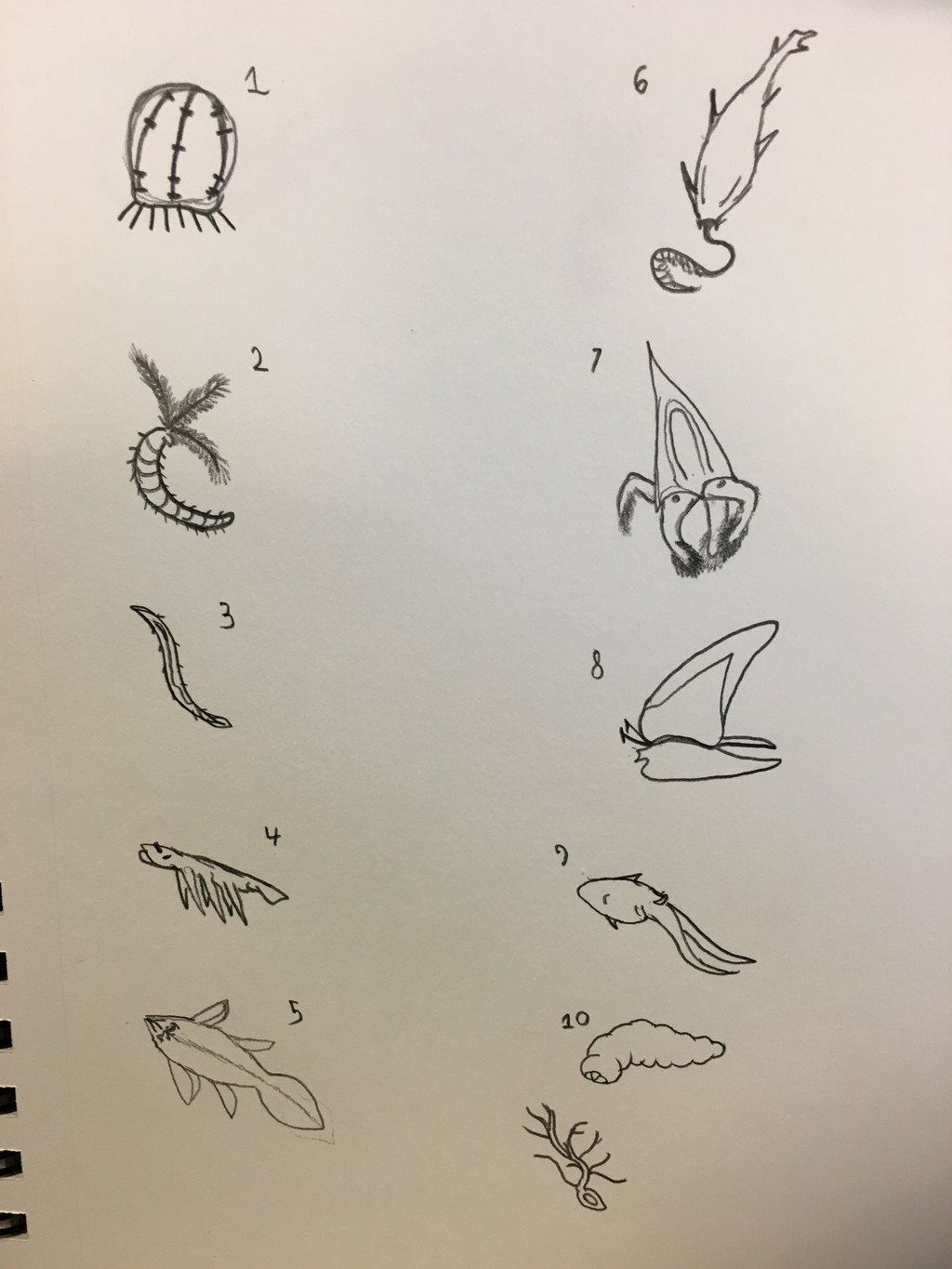HOME | DD
 IchthiusRex — Annomolus invertebrates part 2
IchthiusRex — Annomolus invertebrates part 2

Published: 2017-11-04 14:54:55 +0000 UTC; Views: 223; Favourites: 2; Downloads: 0
Redirect to original
Description
Who's up for round two?1. Splot: a diverse and ancient group that utilizes specialized cilia to traverse in terrestrial and aquatic environments. Size is between 1mm and 4cm in diameter. The vertical bands are simple eyes that only detect light and dark. Their main sense is vibration detection. They asexually reproduce in massive blooms during daylight, when they feed on a medley of foods that accumulate due to the nightly dying. Their rasping pad-like mouths open into a small esophagus and then a stomach that makes up the majority of their body.
2. Builder Worm: Tube building worm like organisms that occupy a wide range of habitats. Their frond like gut extends from their body to facilitate osmosis and their algae symbionts. Many of their tubes form 'reefs' in shallow water environments around the globe.
3. Splicer: The viral gametes of Squidfaces, these horrific parasites can cause severe genetic damage and cancer like diseases. They lack any digestive system and typically don't live for long.
4. Squiggler: Annomolus' squids, nothing really needs to be said except for their toothy jawless mouth on their underside.
5. Cyclomorph: The siphonofore like precursors of Squidfaces. Their mouths are lined with a photo receptive layer of cells. They breath using an oraface that eventually became the colonies mouth. They now only live in deep waters of the southern ocean.
6. Blood Boil: Because of Biped's bizarre circulatory system having a valve type of blood clot, very few bloodsuckers can live off them. In addition, the hard cloak of most bipeds presents a barrier to anything trying to pierce the skin. Blood Boils have solved this with a sort of numbing agent and a bizarre proboscus that enables feeding. They anchor themselves inside of the cloak with backward facing spines. They have one problem: reproduction. To facilitate mating, their prosterior breathing tube releases some of the blood they have consumed to attract parasitic Helicopter Flies. Their mating process then continues like a sort of bleeding flower.
7. Sea Cone: A wide variety of quadrilateral invertebrates which use gas chambers within their shell to regulate their buoyancy similar to the chambered nautilus of Earth.
8. Bipod Snail: A group of Annomoloid, two footed snails. Nothing else.
9. Bipuss: A soft bodied group closely related to the Bipod Snails. Usually quite clever and live in both aquatic an der freshwater environments.
10. Tree's Bane: A diverse group of blue plant parasites that inhabit the fleshy insides. They range in form from the grub like borrowers to the branching, threadlike infectiors.
























